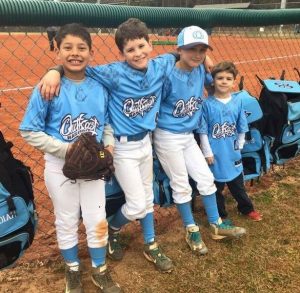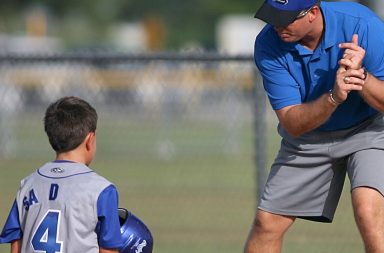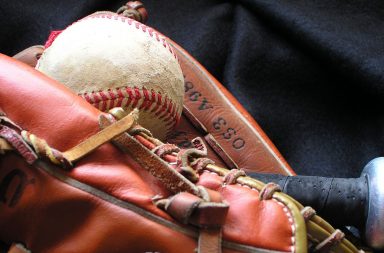In any practice, you will do well to use stations – these “work centers” allow small groups of players to get many more skill repitions than they ever would standing in line waiting for their turn to bat. Ideally, you will run at least three stations at any given practice; if you can increase this number to four or five, so much the better. If you have a well-run practice, it shouldn’t take much more than an hour for each batter to get at least two passes throguh each station. If you take much longer than this, you run the risk of losing your players’ attention spans.
The rest of this article deals with recommended stations and how to run them. For the sake of variety, you may want to change which stations you use from practice to practice. In every station, always emphasize proper technique – have the batters dig in for every swing, have them load up properly, make them swing hard and follow through each time. The idea is to build muschle memory; if they don’t practice swings the way they will use them in game situations, the benefitd of the drills are decreaesed or completely lost.
The Tee Drill
An absolute essential – you should use tee drills at almost every practice. Major league baseball players hit off of a batting tee every single day, and your players will reap similar benefits. All you need to run a tee drill is a batting tee and either a net of some sort or a nice section of chain link fence.
Make sure that your hitters do not contact the tee. If the ball pops up, the batter is likely hitching or dipping his swing. Adjust the tee every few swings to work the entire range of pitches the batter might see – inside and outside, high and low. The tee gives you a great opportunity to focus on particlar holes in your players’ swings.
 Soft Toss
Soft Toss
This is another excellent drill that allows you to work o fine-tuning the batter’s swing without the pressure of live pitching. For the simplest variation, all you need is a net or a small piece of chain link fence. Soft toss should be a regular part of your drills; as an added bonus, any mom or dad can work with their player at home with this drill.
Stand in front and to the side of the hitter, no more than six or eight feets away, and lob balls to him. For a variation especially useful for limited space, you can stand four or five feet away, directly at a ninety degree angle to the hitter. This also works for helping emphasize the need of wtching the ball.
If you have a pithing screen, you can set up at about half live distance in front of the batter and toss from behind protection.
Live Pitching
All the drills in the world will only do such much good if the batter never sees live pitching. Of course, this station requires the most room of any; you’ll need an actual batting cage or lots of open field space behind you. While this station will allow you to see the most in the way of results, it also offers the least amount of opportunity to analyze errors in a player’s swing – if at all possible, designate a coach to concentrate on the player only, not the results of ay hits.
You should be wary of letting a practice go by without hitting.
Practice Golf Balls
An absolutely outstanding hitting drill, worthy of its own article (see article here), plastic practice golf balls can develop a hitter’s hand-eye coordination like nothing else. This drill does not require a net, since the balls can’t go very far, and are non-dangerous. Set up six feet or so in front of the batter at a forty-five degree angle nd lob the pitches in. For a more challenging drill, substitute a length of broom handle instead of the normal baseball bat!
The Hitting Stick
This traditional baseball training aid can be found in pretty much any sporting goods store; they start at twenty dollars or so, and go up to around forty dollars. A hitting stick looks like a vinyl-covered ball on the end of, well, a stick.
You get similar benefits from a hitting stick as you do from a batting tee – you can ove the ball up or down, in or out, and can even apply some motion to things. Hitting sticks make great additional batting stations or nice changes or pace for practice; young kids seem to particularly enjoy them.
Mix and match, and keep things new and interesting. You can always duplicate stations – hve more than one batting tee, for instance – or put variations in them. Do chair drills, fence drills, or multiple tee drills. You might find other training aides, such as the “Hit Away” to be useful, as well. The main thing to remember is to emphasize proper technique on each and every swing. Practice makes perfect!


